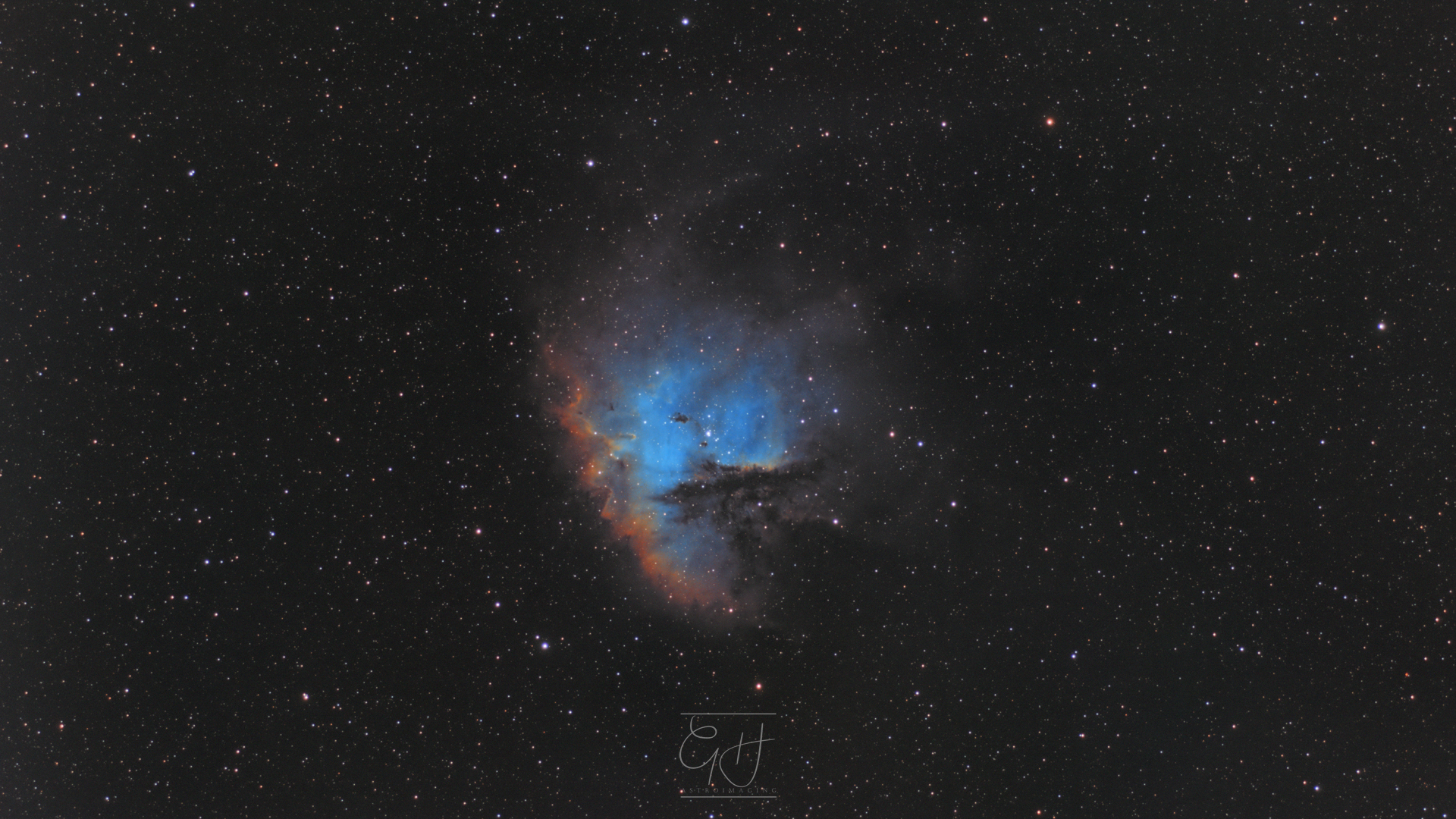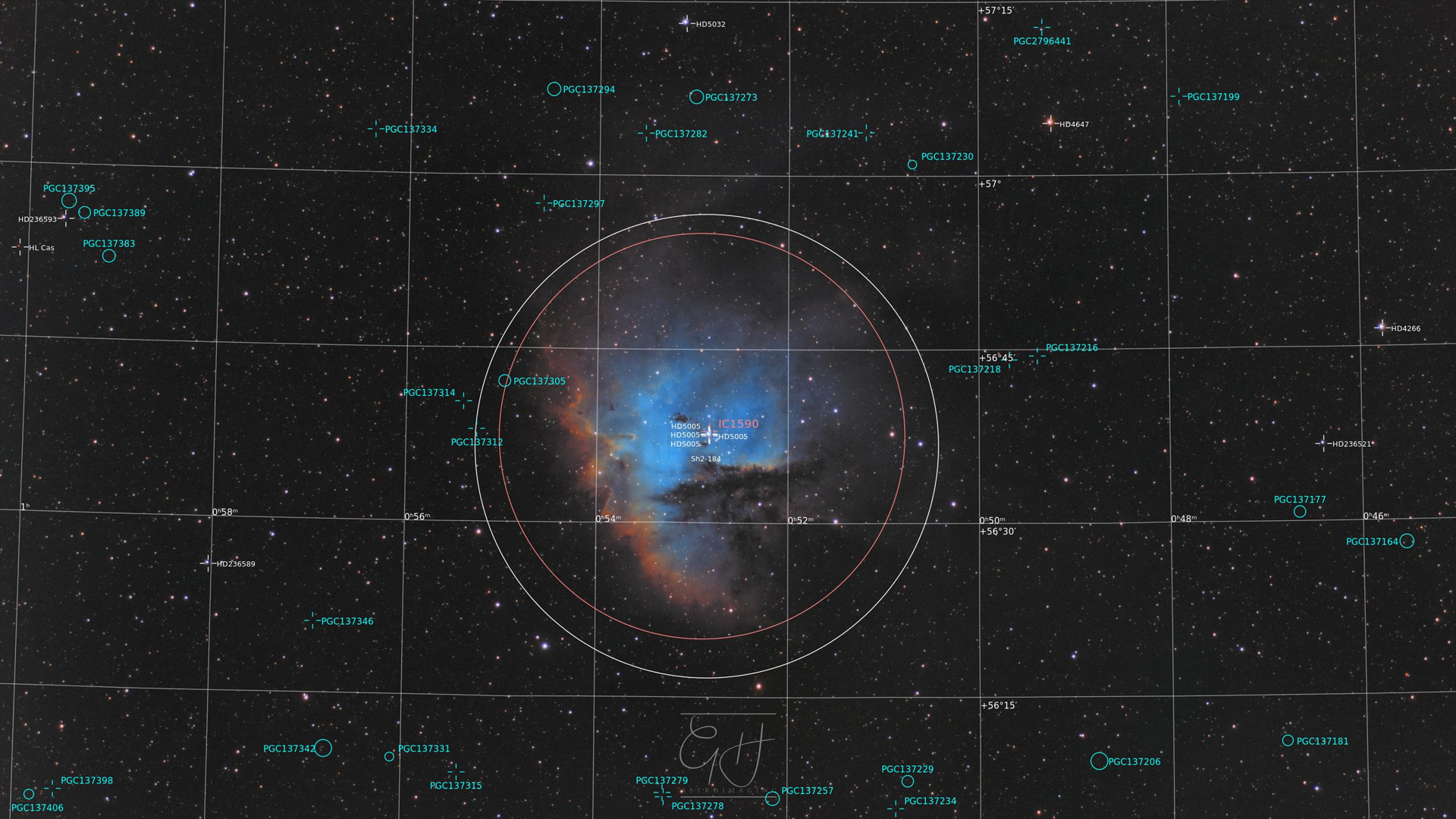The Pacman Nebula, January 2 2023


The Pacman Nebula, also known as NGC281, IC11 or Sh2-184, is an emission nebula in the constellation Cassiopeia. It is named for its resemblance to the shape of the video game character.
More information about this object can be found on its Wikipedia page.
Having spent a long time processing the data for my previous image of the Soul Nebula, I was now really excited to capture more targets with my new equipment. Before getting there though, I had noticed from studying the individual frames of the Soul Nebula that there were some optical defects in my image train that I had never really noticed before. The precision of my DSLR was never really enough to highlight the fact that there appeared to be a difference in the focal point at different places in each image. The higher quality images from the new camera were starting to make this effect visible.
During periods of poor weather, it's normal for me to be reading up on new developments in astrophotography. I stumbled across a discussion thread about a plugin for a software package called N.I.N.A. (Nighttime Imaging 'N' Astronomy). The plugin goes by the name of Hocus Focus, and I learned that it works by analysing images on both sides of the ideal focus point in order to look for such aberations as field curvature and camera tilt.
Now, anyone who's been reading the details of earlier images might have noticed an accessory called a field flattener that I use. The idea of this is that it corrects for curvature in the focal plane which is mostly unavoidable with refractor telescopes. It is a corrector lens that results in a focal plane with a larger radius of curve, with the intention that the entire camera sensor can sit within the critical focus zone. This is the area where any shift in focus is visually undetectable. In order to give the best correction possible, it is essential that the camera sensor is placed at an ideal distance behind the corrector lens. This is one of the areas where the Hocus Focus plugin comes into play.
When collecting images through the focus travel from outside focus to inside focus, Hocus Focus can measure at what point in the measurement the best results are achieved not only in the centre of the frame, but at the corners as well. It is then able to make recommendations to either increase or decrease the distance between the camera sensor and the field flattener to minimise the difference in optimal focus positions for different parts of the sensor. This identifies the point at which curvature is reduced as much as possible.
Another trick of the Hocus Focus plugin is to identify something called camera tilt, which is when the sensor is not perfectly orthogonal to the optical axis of the telescope. Corrections for tilt require a device that can make tiny adjustments (of the order of a few microns) to the distance of different parts of the camera sensor to ensure that all 4 corners are as near as possible to the same distance from the telescope lens. The device I purchased to achieve this is the Gerd Neumann CTU, or Camera Tilt Unit.
It's highly likely that most people would never have noticed the small defects in star shapes that I was seeing near the edges of the images, but after making my adjustments for both curvature and tilt, I was delighted with the end result. This image has tried to emulate the famous Hubble Palette, which starts by mapping the sulphur emission to the red channel, hydrogen to green and oxygen to blue. Following that combination, the colours are typically adjusted to produce a mix of red-gold tones and blue tones. On top of this, I have combined the red, green and blue broadband data to create visually accurate star colours.
You can view this image in the WorldWideTelescope by clicking here.










Sign in to enable commenting